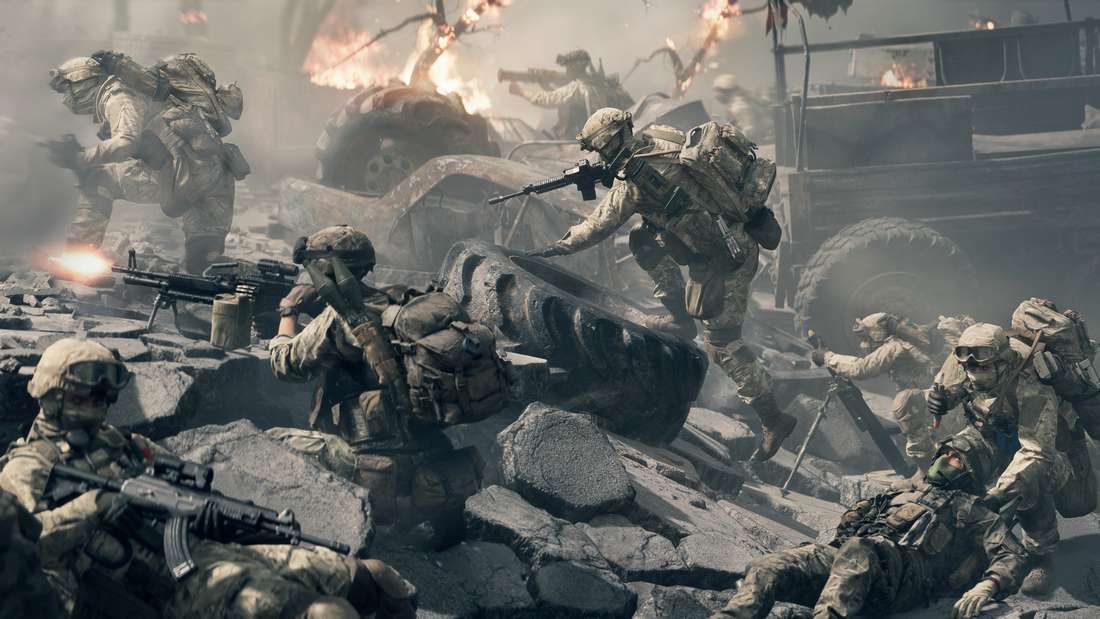The Cautious Start: Why Battlefield 6 Vehicles Were ‘Too Weak’ and Why That’s a Smart Strategic Move
Popular Now
 God of War Ragnarök
God of War Ragnarök
 NBA 2K24
NBA 2K24
 Brawl Stars
Brawl Stars
 Free Fire
Free Fire
 Among Us
Among Us
 Gacha Club
Gacha Club
 Roblox
Roblox
 Garena Free Fire: Kalahari
Garena Free Fire: Kalahari
 Valorant
Valorant
 Black Myth: Wukong
Black Myth: Wukong 
The feedback loop for any major AAA video game launch is a critical, often volatile, period. For the highly anticipated Battlefield 6 (or as some speculate, a return to the series’ roots), the recent beta testing phase ignited a familiar firestorm: the contentious balance between infantry and vehicle combat. Specifically, a significant volume of player feedback indicated that the powerful war machines—tanks, attack helicopters, and even light transport vehicles—felt surprisingly underpowered, succumbing far too easily to the seemingly overwhelming firepower wielded by skilled Engineer Specialists.
Responding directly to the community’s concerns, a key DICE producer, David Sirland (known in the community as ‘tiggr’), offered a definitive, and perhaps counter-intuitive, explanation for this initial imbalance. His statement reveals a calculated design philosophy that prioritizes long-term game health and competitive balance over immediate player satisfaction, a move that veterans of the franchise and analysts focusing on the highly sensitive gaming stock market are paying close attention to.
Prioritizing Long-Term Balance: The DICE Philosophy
The core of Sirland’s defense rests on a deliberate, conservative approach to initial vehicle tuning. Speaking on social media, the producer clarified that the issue wasn’t a bug but a fundamental balance challenge the studio is proactively managing. His now-widely-quoted rationale is simple yet profound:
“Rather have too weak vehicles over too powerful to start. It’s a tricky one as players get better at using them over time as well.”
This statement underscores a significant lesson learned from past Battlefield launches (particularly the early days of Battlefield 2042, where air and ground vehicles often dominated the massive 128-player maps, leading to widespread infantry frustration). The ‘too weak’ starting point is a strategic anchor, providing a necessary buffer against the inevitable player skill ceiling increase post-launch.
Why Starting Weak is a Strong Tactic: The Competitive Edge
The decision to under-tune vehicles at the start is directly tied to the exponential growth of player expertise in a live-service environment. Consider the following strategic advantages for this cautious approach:
- Mitigating ‘Launch Day Meta’ Dominance: An overpowered vehicle meta on day one can fundamentally break the game experience for the majority of infantry players. This leads to early mass frustration, negative media coverage, and potentially a decline in the game’s crucial early player retention rates.
- The Evolving Skill Curve: Vehicle players, especially highly-skilled pilots and tank crews, will naturally become exponentially more effective in the weeks following launch. Starting with an ‘underpowered’ feel gives the development team, DICE, a predictable and controlled runway for gradual vehicle buffs that can be directly measured against real-world player performance data (a key metric for a title with such a high development cost).
- Promoting Teamwork and the Engineer Class: When vehicles are glass cannons, they necessitate teamwork. The perceived weakness incentivizes a greater presence of the Engineer class on the battlefield, creating a necessary and engaging support structure for vehicle crews. If tanks were invulnerable, the Engineer’s primary role would be marginalized, diminishing the game’s core ‘rock-paper-scissors’ design philosophy.
 The Engineer Threat and Infantry Power Creep
The Engineer Threat and Infantry Power Creep
A major point of contention during the beta was the sheer effectiveness of the Anti-Tank (AT) weaponry available to infantry, particularly the Engineer. Players observed that a coordinated squad of Engineers could rapidly dismantle even the heaviest armor. This perceived imbalance—where “infantry is more dangerous to vehicles than vehicles are to infantry”—is precisely the tightrope Sirland and his team are walking.
The new class system, while fostering a more focused approach to battlefield roles compared to the flexible Specialists of 2042, puts significant AT firepower directly into the hands of the Engineer. In the chaos of 128-player battles, the cumulative impact of multiple rockets, landmines, and other explosives creates a lethal environment for vehicles. Analysts note that the perceived power of the infantry is, in many ways, an indicator of the large-scale map design and player count, rather than a failure of the vehicle design itself.
The Key Takeaway for High-Value Keyword Search: DICE’s strategy is to prioritize game balance and a healthy live service model by implementing a lower power level for vehicles initially. This approach allows them to track crucial data analytics on player mastery, ensuring that future updates, which will inevitably buff the armor and firepower of these war machines, lead to an optimally tuned and highly engaging gameplay experience for both high CPC (Cost Per Click) enthusiasts and the general player base.
Looking Ahead: The Path to Optimal Gameplay and Future Monetization
The beta phase, Sirland admits, makes one thing clear: vehicle tuning is a work in progress. The development studio is now armed with millions of data points on player interaction, vehicle survivability, and the efficacy of infantry AT weapons. The final launch version of Battlefield 6 will undoubtedly see a series of crucial adjustments, likely including:
- Increased Vehicle Health Pools and Armor Plating effectiveness against certain AT projectile types.
- Tweaks to the Damage Falloff and Splash Damage of primary vehicle cannons to give them a stronger presence against concentrated infantry.
- Potential adjustments to the Engineer’s AT loadout capacity or a cooldown increase for anti-vehicle gadgets.
In the high-stakes world of modern gaming, where an initial launch can define a game’s entire lifespan and directly impact quarterly financial reports, the producer’s stance is a calculated risk. By choosing a cautious start, DICE signals a commitment to a measured, data-driven approach. This strategy aims to avoid the costly and reputation-damaging overhauls required when a game is launched with an overpowered element. For the millions of players eagerly awaiting the full launch, the message is clear: the weak tanks of the beta are a temporary placeholder, not a final verdict, setting the stage for a strategically balanced, high-value gaming platform that will evolve over years.
Conclusion: The Waiting Game for Balanced Power
The controversy surrounding the underpowered vehicles in the Battlefield 6 beta is a textbook example of pre-release tuning philosophy in a live-service environment. By opting for a ‘too weak’ start, DICE has established a baseline that allows them to safely and incrementally improve vehicle performance as the player base’s skill increases. This prevents a launch day catastrophe and ensures a healthier, more competitive, and ultimately more enjoyable long-term experience for all players. The sore Engineers will eventually have to work harder, and the vehicle veterans will soon feel the satisfying punch of their weapons, all thanks to a producer’s calculated gamble on a cautious start.







 The Engineer Threat and Infantry Power Creep
The Engineer Threat and Infantry Power Creep